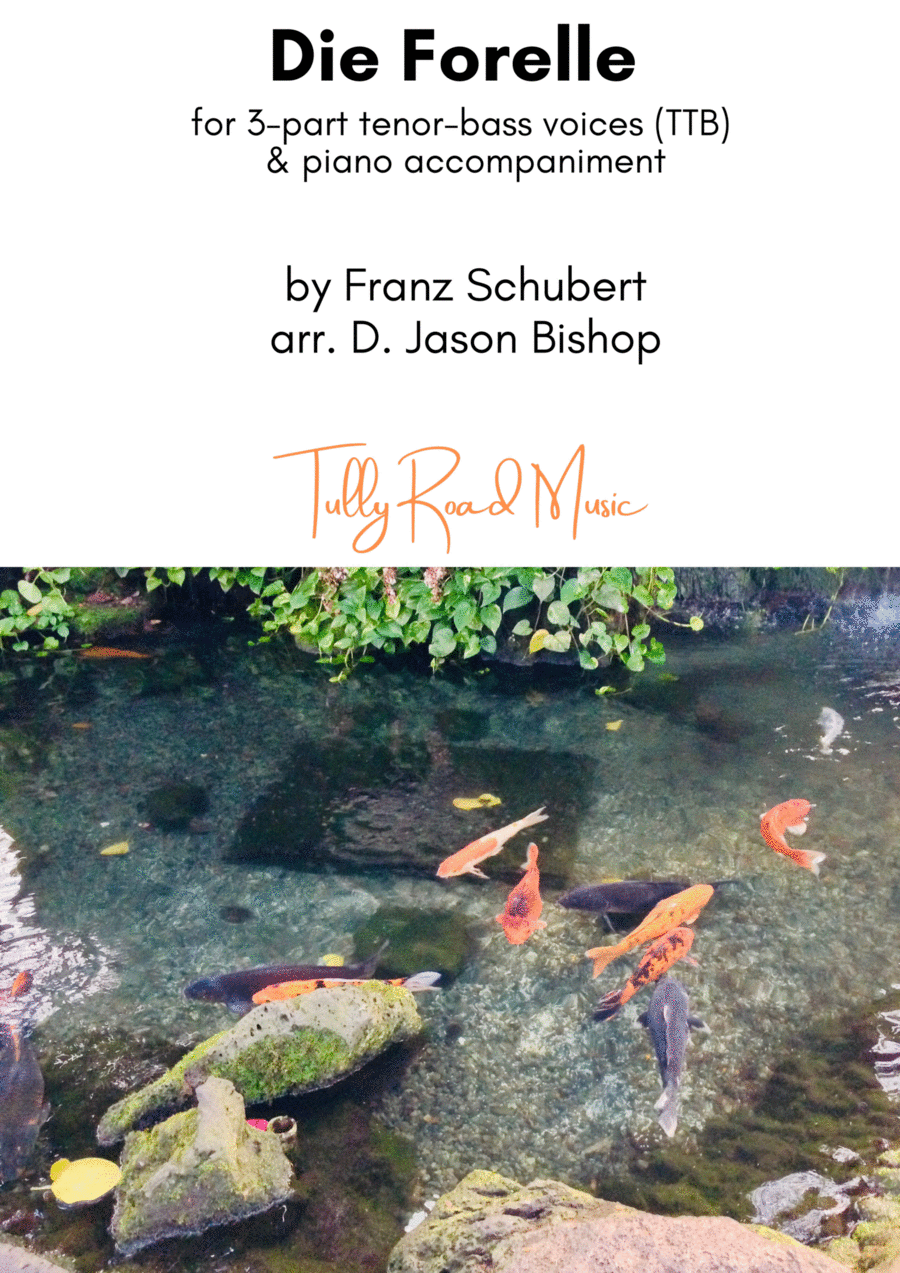Choral Choir,Choral (TB) - Level 3 - Digital Download SKU: A0.1346467 Composed by Franz Schubert. Arranged by D. Jason Bishop. 19th Century,Classical,Instructional,Romantic Period. 8 pages. Tully Road Music #931253. Published by Tully Road Music (A0.1346467). Die Forelle (D. 550, Op. 32) is among Schubertâs early contributions to the genre of the Lied, a 19th-century German art song for solo voice and piano. Schubert composed over 600 Lieder, and although many of them became popular, Die Forelle was â and still is â one of the most widely recognized and performed. Composed in 1817, Die Forelle takes its text from a 1783 poem of the same name by Christian Friedrich Daniel Schubart. In it, a casual observer stands on the banks of a tranquil stream, admiring the movements of a âfriskyâ fish as it darts below the surface. The tone of the music changes when, to the observerâs horror, a fisherman puts an end to both his and the troutâs merriment by snagging the fish on his hook and reeling him in. In a final stanza which Schubert omits from his setting, we learn that Schubartâs poem is actually a metaphorical story intended to warn young women against the trickery of their young male suitors. As in Gretchen am Spinnrade and many other Lieder, Schubert âcharacterizesâ the piano accompaniment, in this case through both the upward-winding sixteenth-note triplets representing the wriggling movements of a fish, and the abrupt shift towards agitated rhythms in measure 33 when the fish is hooked. The song gained such swift popularity that only two years after its composition in 1817, Schubert was commissioned to write an instrumental chamber work incorporating music from Die Forelle. The result was his Trout Quintet of 1819 (Piano Quintet in A Major, D. 667), the fourth movement of which is a set of variations on the Die Forelle tune.This arrangement is also available for 3-part treble (SSA) voices published by Hal Leonard Corporation, 10500871.
